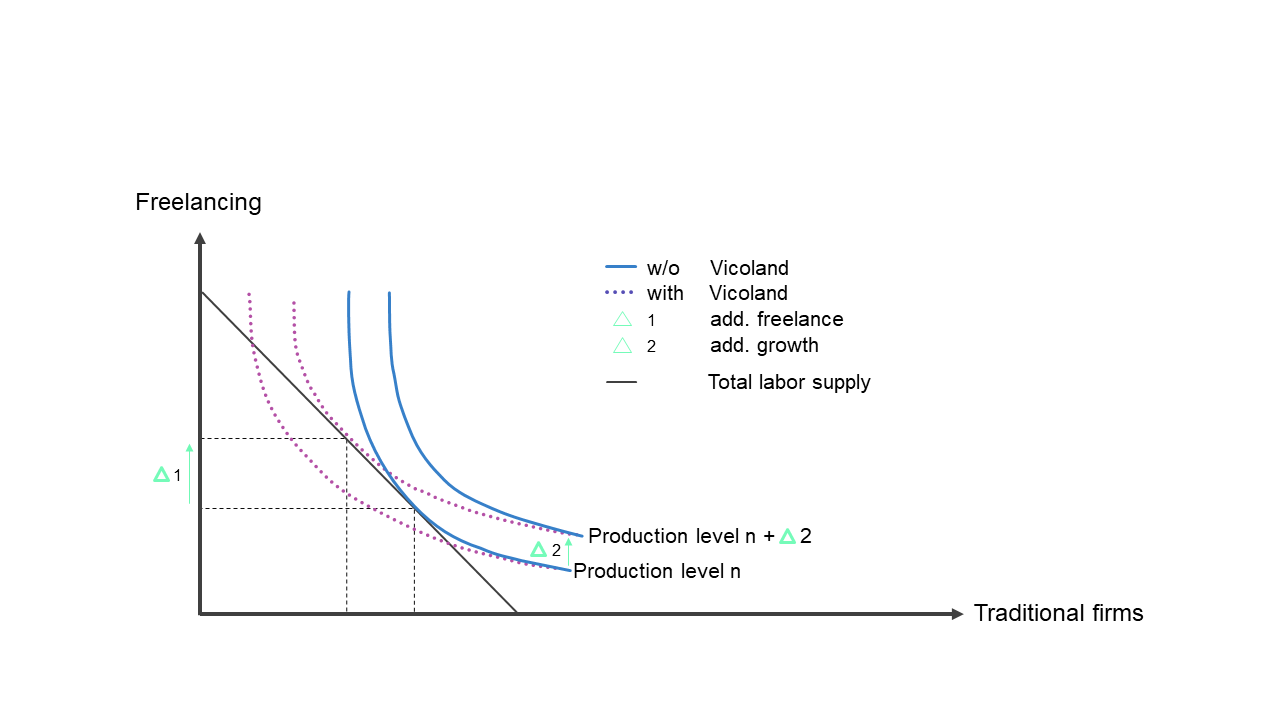A new type of service provider is disrupting the market for services: Virtual Companies, in short “Vicos.” They offer better staffing and more favorable conditions than traditional service companies. As a result, both customers and freelance experts organized within these Vicos benefit from Vicoland. That is briefly the individual economic perspective. However, it is equally interesting to consider Vicoland from a macroeconomic standpoint.
Vicoland is renewing the service industry by giving new and greater significance to the freelance labor supply through the Vicos, benefiting the entire economy. Companies have always worked with external service providers, and they have two fundamental alternatives: they can rely on companies or directly hire freelancers. The allocation of tasks to companies or freelancers is explained by Ronald Coase’s theory of the firm. It states that organizing work within firms makes sense when the tasks are too complex to be organized through the market. Traditionally, tasks went to freelancers, and projects to companies.
Vicoland has introduced a new approach by shifting the balance toward freelancers through the new organizational form of Vicos. Without this organizational structure, freelancers could not provide what companies need for projects: well-organized, legally secure, and financially sound teams. These attributes were traditionally exclusive to companies. Now, even freelancers organized within Vicos can handle complex and large projects – from ERP implementations to CRM systems – making the freelancing side more productive. In other words, freelancers can provide more value than before.
The macroeconomic significance of this fact is evident in the graph below:

The macroeconomic production function appears in the graph as two curves representing production levels n and n + Δ2. The latter is Δ2 higher than n. Δ2 represents the additional macroeconomic growth potential through Vicos. With a given labor supply, the production function shifts in favor of freelancing due to the new organizational form of Vicos: the solid lines for the production function’s curves (isoquants) are no longer valid, and instead, the dashed lines are applicable.
The graph also shows that Vicoland aligns with the ongoing trend in the labor supply: an increasing number of experts are choosing to work as freelancers. The share of freelancers in the labor supply has approximately tripled over the last 30 years. The Δ1 in the graph indicates that more freelancers will be employed in the new macroeconomic equilibrium. Thus, Vicoland contributes to achieving a better match between the demand and supply of specialized expertise.
Additionally, the graph makes it clear that although Vicoland shifts the balance between the supply alternatives in the service market, traditional companies will still be needed. They will only have a smaller share of the overall performance. The organization of labor supply through traditional employment models loses relative efficiency (including the addition of individual freelancers whose contributions are resold as part of the services offered by traditional firms).
Therefore, Vicoland follows a sustainable economic logic: in accordance with Ronald Coase’s “Theory of the Nature of the Firm,” Vicos make it easier for corporate clients to directly engage with the freelance side of the labor supply. Vicos transform this side into easily contractible, reliable, and competent project providers, benefiting all parties involved and the entire economy.
